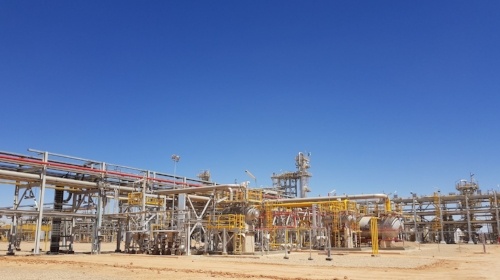6 min read
Oil & Gas Hedging with Deep Out-of-the-Money Options and a Limited Budget
The need for effective hedging and marketing is greater in the current price environment i.e. $50/BBL than it is in a higher price environment i.e....

Financial derivatives do not always provide satisfactory risk mitigation. Your risk profile may be more deeply exposed to risks beyond commodity prices. The market may not be sufficiently developed to allow you to mitigate your risk with fixed forwards, futures, swaps or options. Maybe you are in a location or consume, produce or process a commodity that isn’t traded in with any meaningful volume or transparency to merit hedging with financial derivatives. Maybe the market is supportive, but pursuing an alternative presents a competitive opportunity or more effective use of capital. In this post we explore some of these alternatives to financial derivatives.
A good commodity risk management program coordinates physical commodity management (procurement and/or marketing) and financial risk management. One of the potential opportunities to mitigate risks is found within commodity contract negotiation, often the easiest means of limiting risk. In all likelihood, you and your various counterparties share offsetting risks, some of which you may have considered “unhedgable.” If so, it's likely that you can find a counterparty that is willing to negotiate a mutually agreeable contractual structure to protect both firms from the offsetting exposures.
For example, price spreads among North America crude oil regions have received a lot of attention in recent months and years, as unconventional resources have grown and major supply hubs have developed as a result. However, the basis market for North American crude oil is still relatively immature, causing some market participants to shy away from hedging with OTC derivatives. Consider a refiner on the East Coast US, sourcing crude oil in the Bakken. Bakken crude oil trades at a discount to WTI, which has traded between $84 and $112 over the last year. If the refiner commits to purchase physical crude oil at a fixed differential to WTI with a Bakken producer, the refiner and producer have effectively executed a physical basis swap on Bakken/WTI basis, which allows both parties to lock in a known Bakken/WTI basis differential, a task which is still very difficult, if not impossible, with financial derivatives.
As demonstrated by the example above, contractually defining variables can be a cost effective means of mitigating risk. Consider your own risk profile. Every contract has variables that can be fixed: reference indices, basis relationships, price calculations. How can defining these differently within the contract reduce volatility, price opacity, or price risk? How can this help you meet your unique risk management goals?
Finding opportunities to hedge commodity price risk within a contract is not limited to marketing and procurement in the traditional sense. Many energy market participants have needs that make long-term financial partnerships worth considering. These partnerships can take many different forms. For instance, a partnership could include one party effectively financing the production of a second party, who receives an in-kind payment in exchange for financing.
Volumetric Production Payments, or VPPs, are arrangements whereby a financing party (i.e. – natural gas consumer or bank) provides an upfront cash payment to a producer in exchange for specified volume of the produced commodity over a specific term. VPPs can be quite complex, but can be mutually beneficial. Table 1 summarizes the tradeoffs of a VPP.
|
Producer |
Consumer |
|
Receives upfront cash payment |
Pays upfront cash payment |
|
Monetizes existing asset, retains ownership |
Secures long term supply of feedstock/fuel |
|
Retains production volume above VPP |
Accepts reserves and production risk |
|
Could obtain lower cost of financing |
Effectively pays fixed price for feedstock |
VPPs are just one of many structured products available to consumers and producers as you can structure just about any physical markets/procurement contract with an embedded swap or option. Determining the merits of pursuing structured products such as these requires significant valuation as well as market consideration. First determine if the financial, operational, and time costs provide a better risk-adjusted return than traditional hedging strategies. Second, and just as importantly, consider the counterparty with whom you would execute and the risks associated with that counterparty or if there is even a counterparty willing to take the other side of your proposed structured deal.
Vertical integration is challenging because it typically diverts capital from a core or primary business. Also, weighing the costs versus the benefits of vertical integration requires more time and effort than the previous examples. However, vertical integration is more likely to be the tool of choice in a few examples. Vertical integration is clearly the best option if you can achieve a better full-cycle return, or if a project cannot be economically developed without vertical investment.
Let’s return to the Bakken to explore vertical integration. Upstream development has outpaced infrastructure development, which is one of the main reasons for the previously mentioned volatility in the Bakken/WTI basis market. Natural gas flaring is one of the more commonly discussed problems in North Dakota. For some producers, gas represents a possible constraint to oil production. Investing in midstream or downstream assets, while possibly a diversion from the firm’s primary operations, may represent an opportunity to alleviate constraint and raise total production volumes. Additionally, it could convert natural gas from a cost of production to a secondary revenue source. Larger firms, typically those with capital resources, are already investing in such integration through a variety of vehicles, including LNG, GTL, gas processing and pipelines.
Energy market participants have a wealth of options to consider when evaluating investment and commodity price risk management. While it is easy to focus on traditional commodity price risk management strategies and instruments, many companies would benefit from expanding their search into the alternatives we’ve briefly introduced here as well as many others. Whether in an effort to mitigate commodity price risk, expand revenue capability, or reduce operational constraint, these alternatives hold a lot of potential value for market participants along the value chain.
It is important to remember to evaluate the risk tradeoff when you consider these alternatives. Each offers a unique risk translation or transfer. All of the alternatives offer risk transfers that are different from a typical energy commodity price hedge, which generally converts floating price risk to fixed or vice-versa.

6 min read
The need for effective hedging and marketing is greater in the current price environment i.e. $50/BBL than it is in a higher price environment i.e....

4 min read
This post is the first in a series where we explore the most common strategies utilized by market participants – in these examples we will focus on...

1 min read
Over the course of the past few days we've received several reports that Mexico has begun to execute it's 2014 oil hedging program, so we're going to...